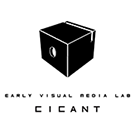Ubiquitous site specific performance- Técnicas imersivas na reprodução dos espaços e da representação cénica através da performance “Conversas com pedras/Talks with stones” [PT]
Jorge Sá e Ana Tamen
Esta investigação baseia-se num trabalho de campo realizado no âmbito do Mestrado de Teatro da Universidade de Évora, no Cromeleque de Almendres.
Teve como objetivo a criação de uma performance site-specific com actores, durante cinco dias, mediante uma abordagem imersiva, que se guiava segundo um protocolo pré-estabelecido. Com o título “Conversas com pedras/Talks with stones”, o trabalho é uma interrogação sobre a passagem do tempo, os vestígios de vida anterior e de vida presente, e concretamente este ‘aqui e agora’, que é intrínseco à performance.
O desafio foi o de estabelecer um diálogo sensorial, a todos os níveis físicos e de percepção, com pedras milenares num espaço e um tempo, simbolicamente carregados, que se traduziu numa performance ininterrupta de cerca de 8h por dia, em diversos momentos do dia. Toda a ação foi captada em vídeo e fotografia, para suportar a segunda fase da investigação, que se centra na criação de uma performance expandida no tempo e no espaço, através de técnicas imersivas. Quer isto dizer que o termo site specific explorado pode ser reproduzido, percecionado e vivido fora do lugar, em qualquer tempo através das novas tecnologias, pretendendo-se através de projeções de grande dimensão em telas opacas e transparentes, criar um espaço cénico de diorama e reproduzir ininterruptamente a performance, expandido assim o conceito site specific para além da sua endémica definição.







